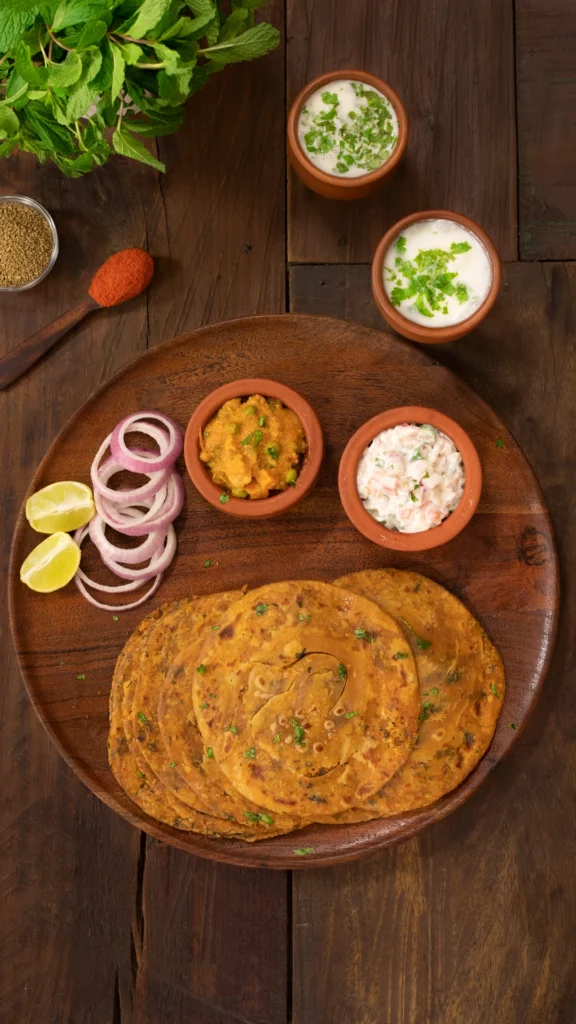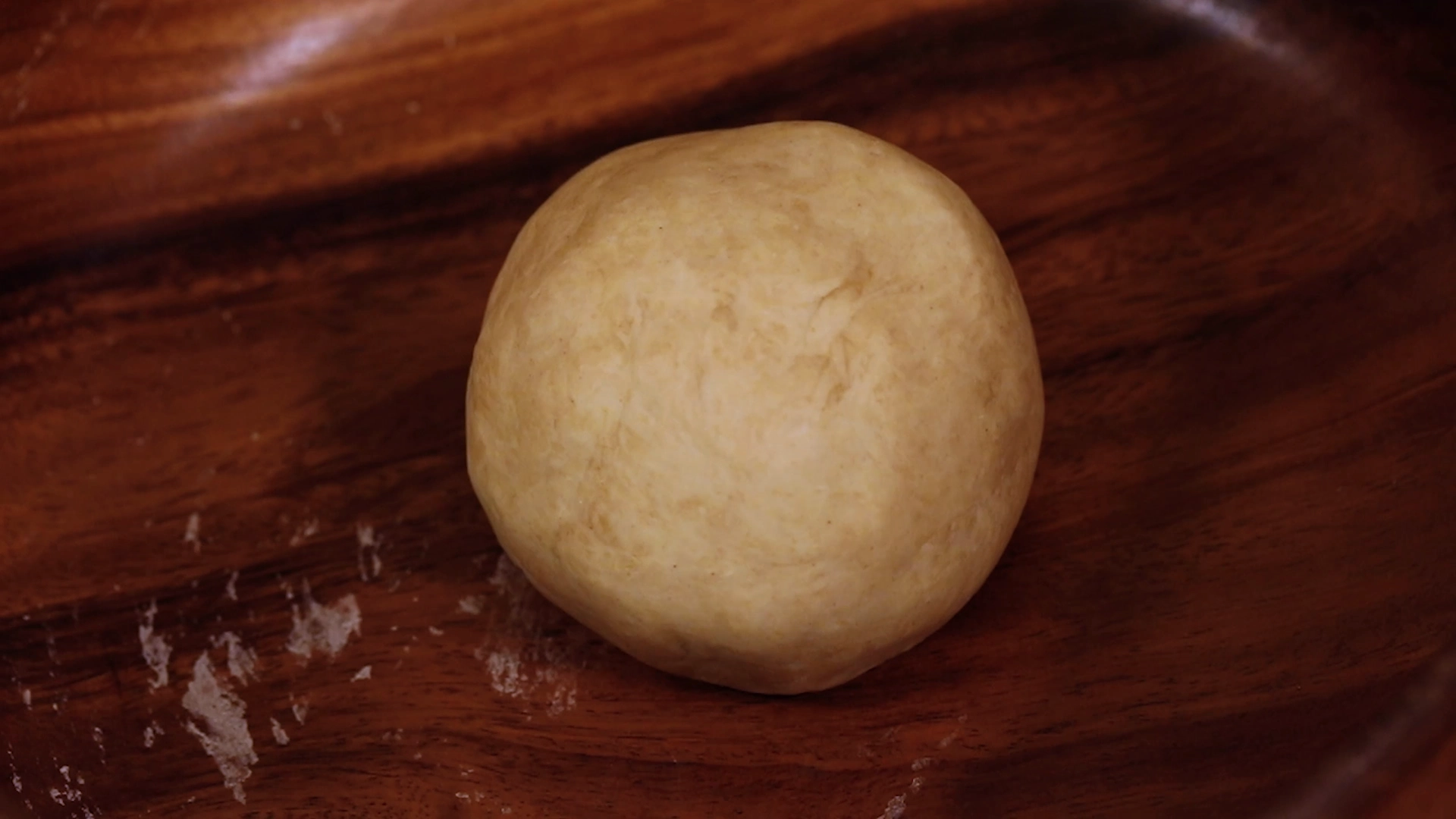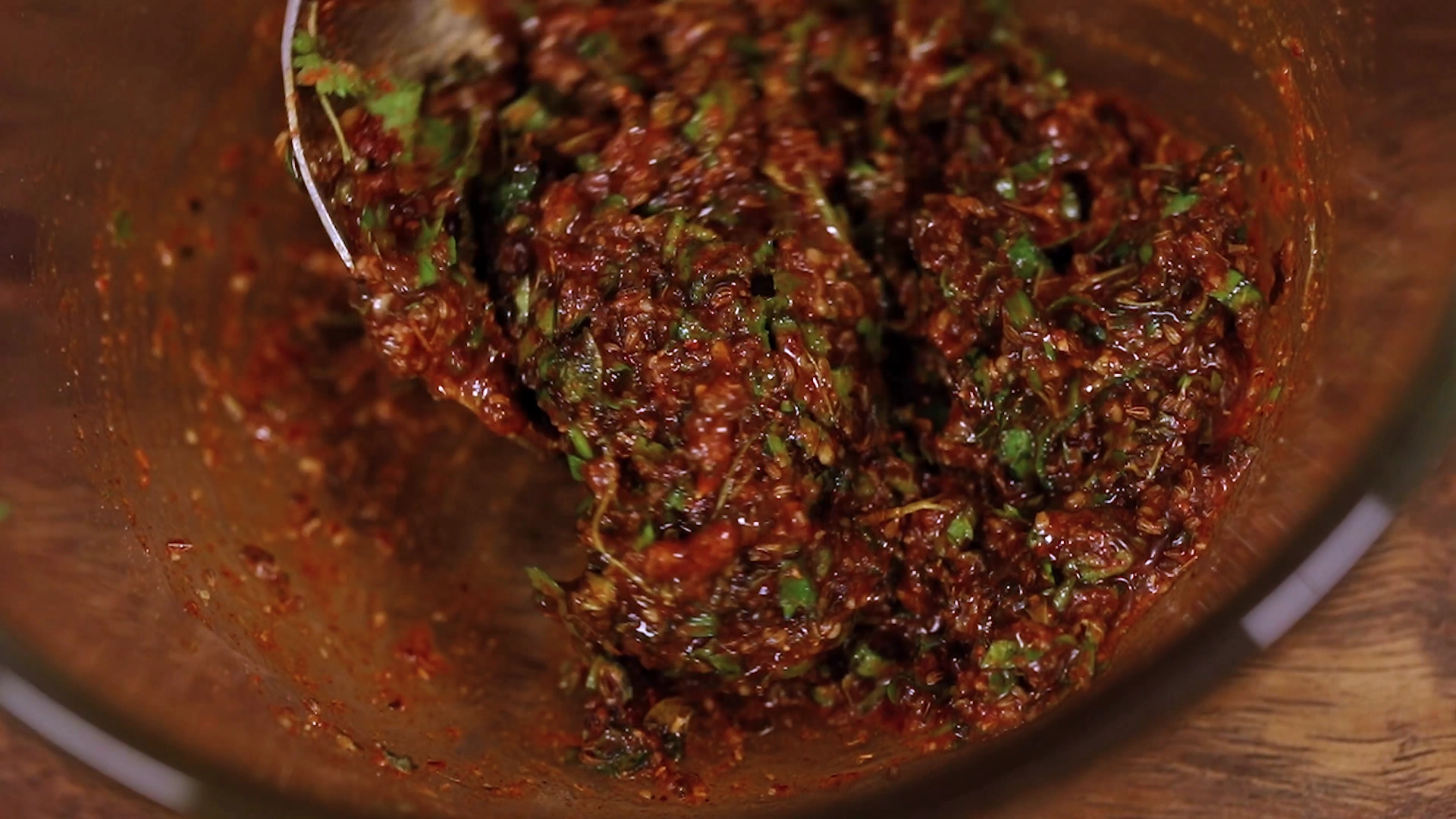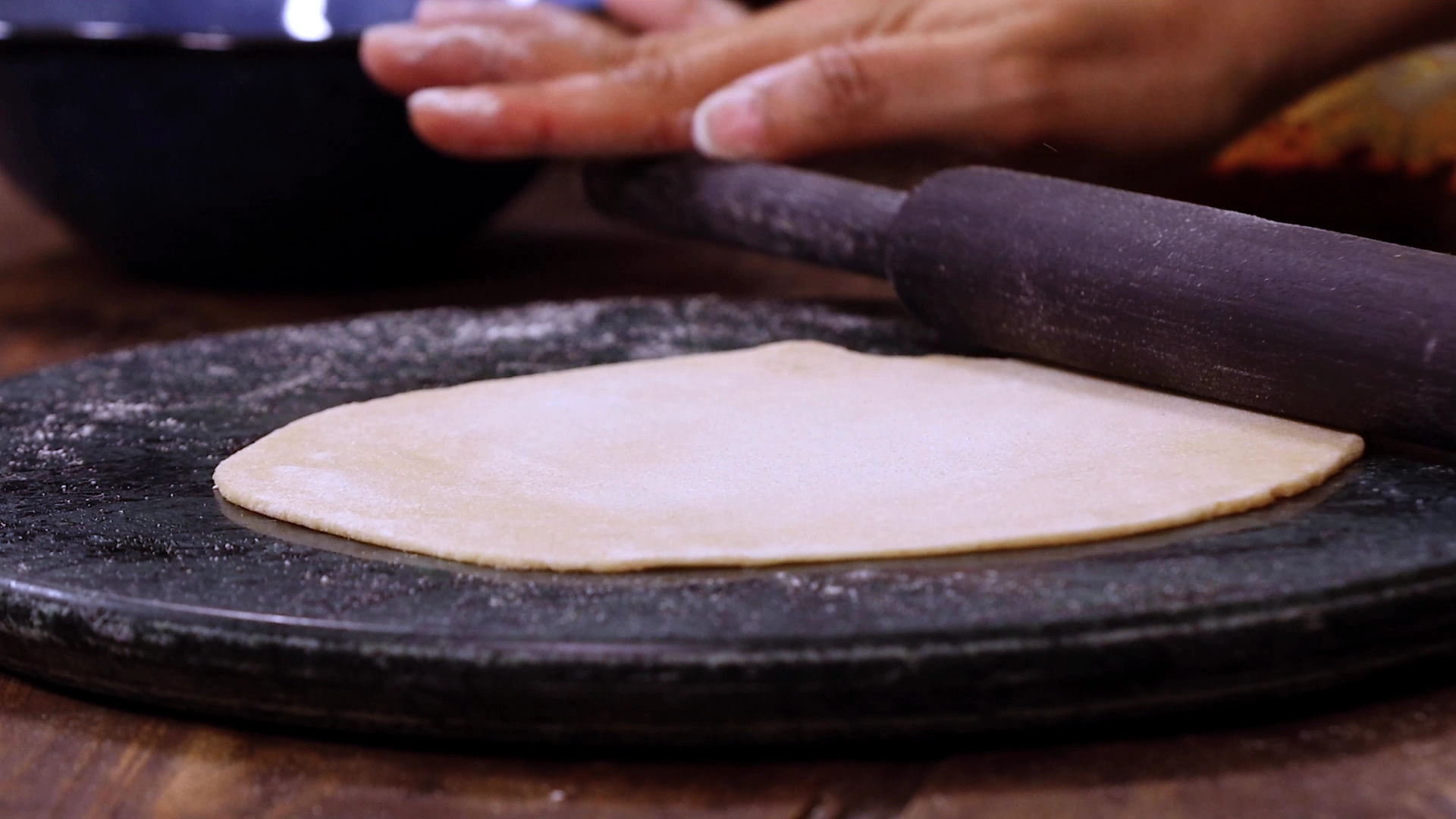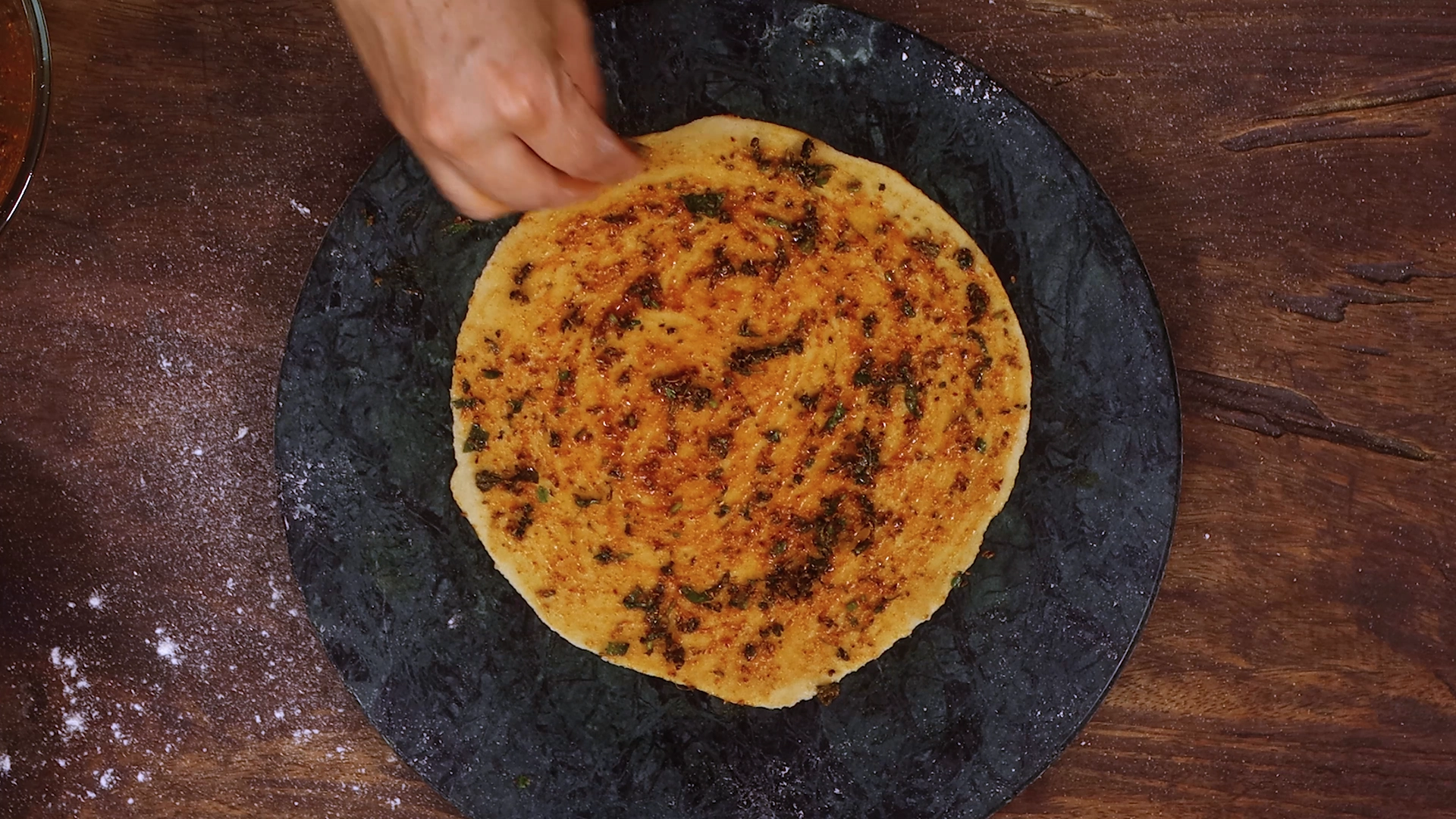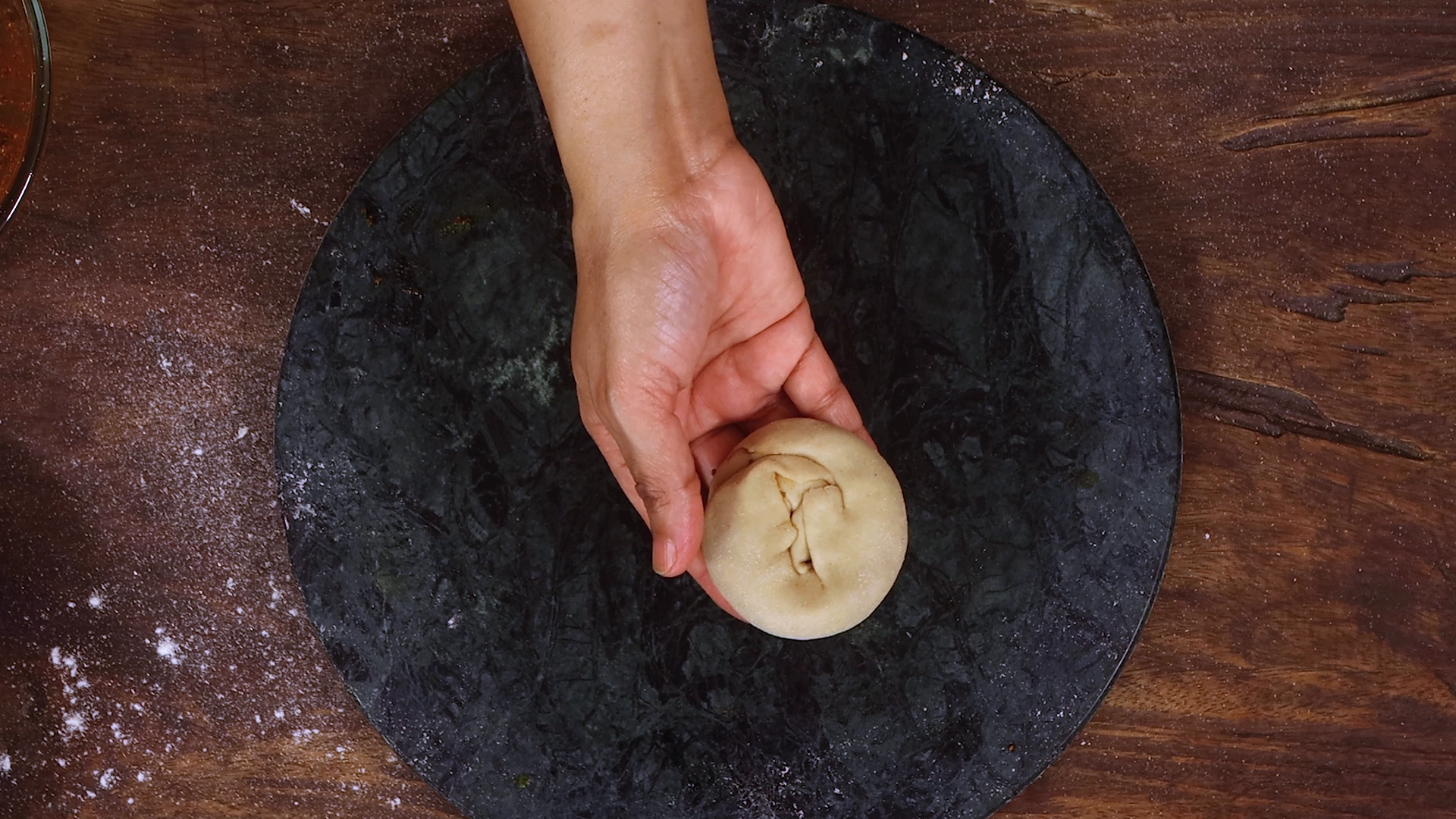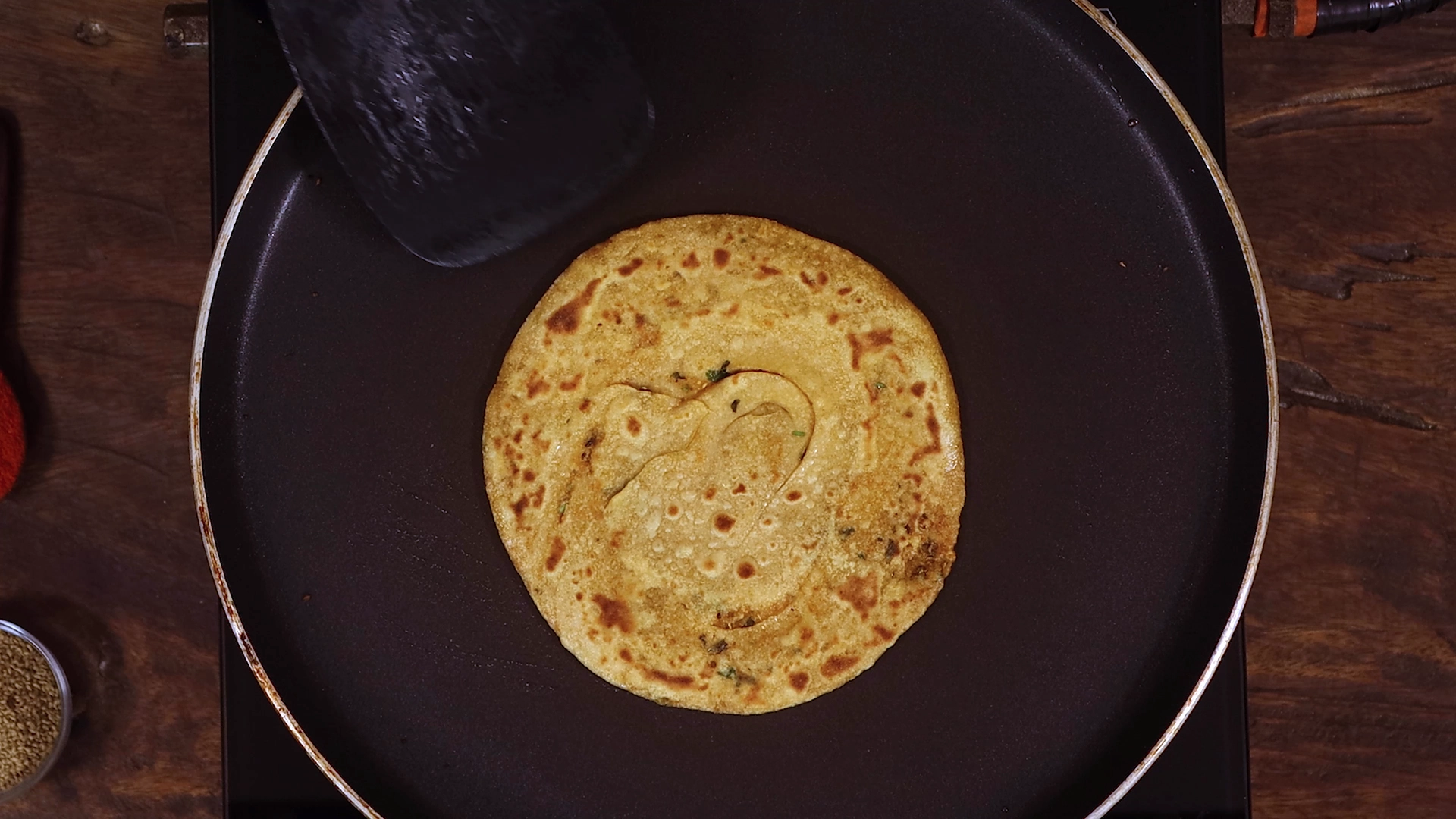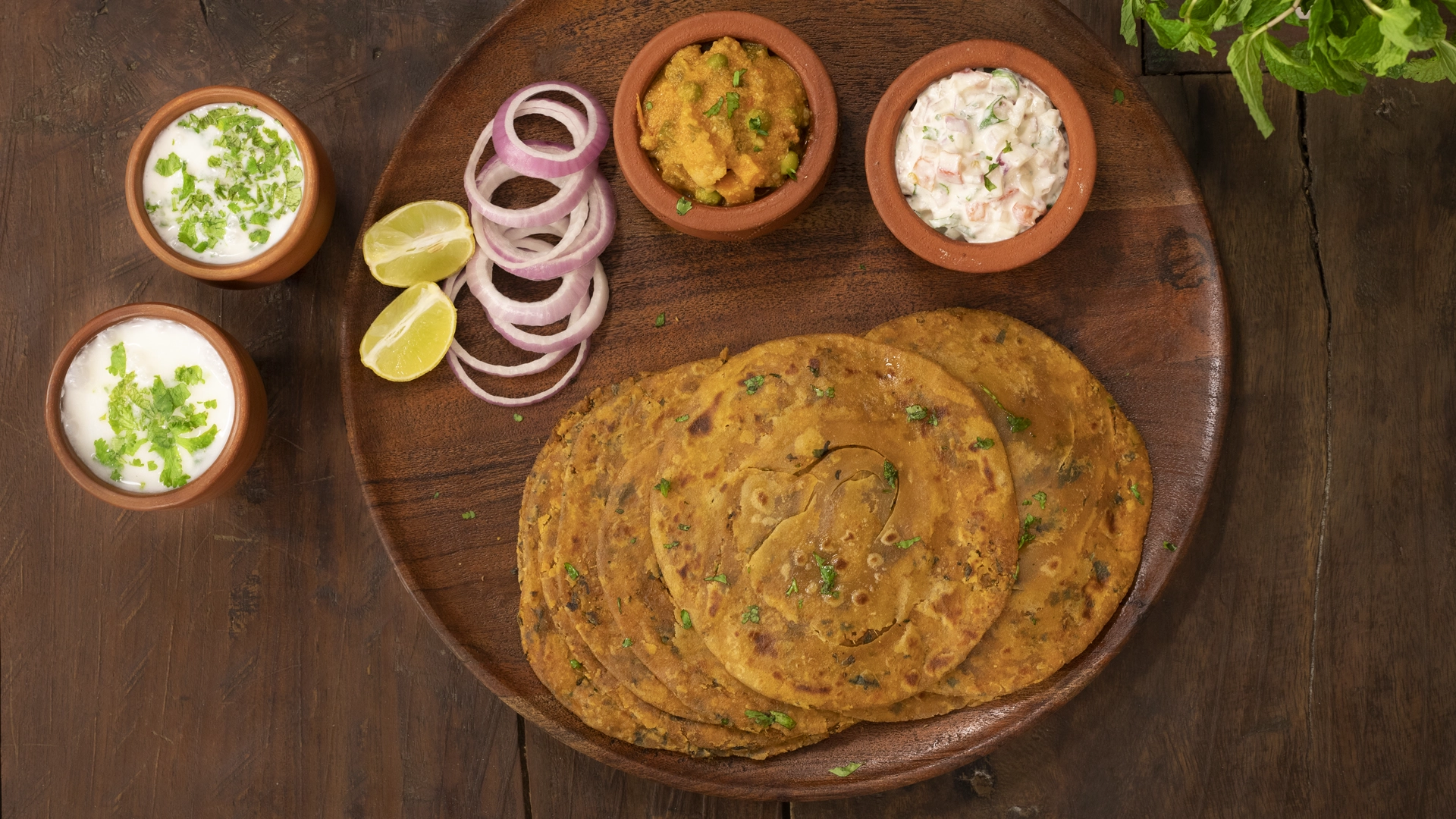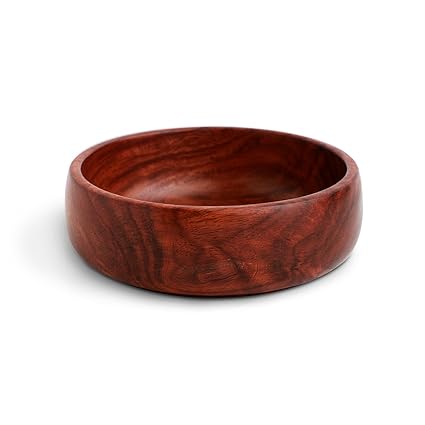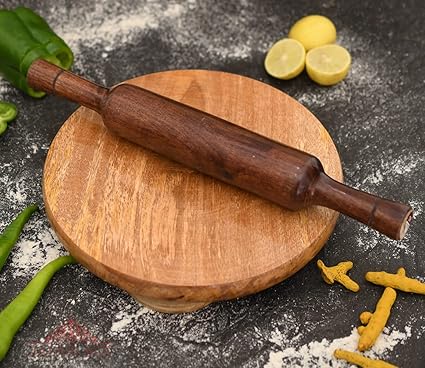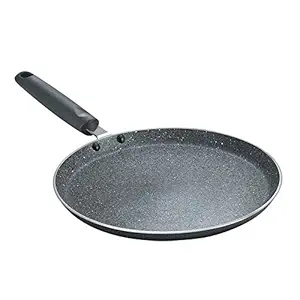Parathas in Indian Cuisine
Parathas are a staple across India, enjoyed for breakfast, lunch, or dinner. The name comes from “parat” and “atta,” meaning layers of cooked dough. Unlike plain rotis, parathas are folded and cooked with ghee, making them soft yet crisp. They can be stuffed with spiced fillings like potatoes, paneer, or vegetables—or, as in this case, layered with a fragrant masala mix.
What Makes Masala Paratha Special?
The dough is simple—just wheat flour, salt, and a bit of oil, making it soft and pliable. The filling is a blend of ghee, coriander, kasuri methi, ajwain, and warm spices, giving it a burst of flavor. The rolling technique creates thin, flaky layers that crisp up beautifully when cooked on a hot tawa.
- Whole Wheat Flour – The base of the paratha, it gives a hearty, slightly nutty flavor while ensuring a soft and chewy texture.
- Ghee – Adds richness and helps in achieving crisp, flaky layers. It also enhances the aroma of the spices.
- Kasuri Methi (Dried Fenugreek Leaves) – A key ingredient that brings in a deep, slightly bitter, and earthy flavor, making the paratha more aromatic.
- Ajwain (Carom Seeds) – These tiny seeds add a mild peppery taste and aid digestion, making the paratha easier on the stomach.
- Cumin Powder – Gives a warm, earthy undertone that balances the heat from the chili powder.
- Garam Masala – A blend of spices that adds depth and warmth, making the paratha more flavorful.
- Red Chili Powder – Brings in the right amount of heat, making every bite slightly spicy and bold.
- Coriander Leaves – Fresh and citrusy, they brighten up the flavors and give a fresh contrast to the warm spices.
- Salt – Enhances all the flavors, ensuring that the masala is well-balanced.
How Is Masala Paratha Made?
Making Masala Paratha is a simple yet rewarding process. It starts with preparing the dough, followed by making a flavorful masala filling, and finally rolling and cooking the parathas to perfection.
Step 1: Preparing the Dough
Start by taking whole wheat flour in a large bowl. Add a pinch of salt and a little oil—this helps in making the paratha soft while ensuring a crispy outer layer. Gradually add water and knead the dough until it comes together into a soft, smooth ball. Knead it well for about 5 minutes to develop the gluten, which gives the paratha its elasticity. Once done, cover the dough and let it rest for at least 30 minutes. Resting helps relax the gluten, making it easier to roll out.
💡 Pro Tip: A well-kneaded and rested dough makes rolling effortless and prevents the paratha from becoming too hard or chewy.
Step 2: Making the Masala Filling
In a bowl, mix melted ghee with finely chopped coriander leaves, kasuri methi, ajwain, cumin powder, garam masala, chili powder, and salt. This spice mixture is what gives the paratha its bold flavor. The ghee not only binds the spices but also enhances their aroma, making every bite more flavorful.
💡 Pro Tip: Lightly crush the ajwain between your palms before adding it. This releases its essential oils, making the paratha more fragrant and easier to digest.
Step 3: Rolling and Filling the Paratha
Divide the dough into equal portions and roll each into a smooth ball. Lightly dust the rolling surface with flour and roll out a dough ball into a thin, round shape. Spread the prepared masala evenly over the surface.
Now, start rolling the paratha from one end to the other into a tight log, then coil it into a spiral shape. Flatten it slightly and roll it out again into a paratha, ensuring the masala spreads evenly within the layers.
💡 Pro Tip: Rolling the masala inside creates layers that crisp up beautifully when cooked, giving the paratha a flaky texture.
Step 4: Cooking the Paratha
Heat a tawa (flat pan) on medium heat. Place the rolled-out paratha on the hot surface and let it cook for a minute until light brown spots appear. Flip it over and spread some ghee on the cooked side. Flip again and apply ghee on the other side as well. Press gently with a spatula and cook until both sides turn golden brown with crispy edges.
💡 Pro Tip: Cooking on medium-high heat ensures that the paratha gets crisp without becoming too dry. If the tawa is too hot, the outside will brown quickly while the inside remains raw.
Once done, remove the paratha from the pan and serve hot. The result is a flaky, crispy, and flavorful masala paratha that pairs perfectly with yogurt, pickle, or any curry.
How to Pair or Serve
Masala Paratha is incredibly versatile and pairs well with a variety of side dishes.
- With Yogurt & Pickle: The simplest and most traditional way to enjoy masala paratha is with a bowl of fresh yogurt and a side of spicy pickle. The creamy yogurt balances the spice, while the pickle adds a tangy punch.
- With Chana Masala: The earthy flavors of chickpea curry complement the spiced paratha beautifully. This is a classic combination for a satisfying meal.
- With Dal & Sabzi: Masala paratha goes well with a simple dal (lentil curry) or a vegetable sabzi for a wholesome, everyday meal.
- As a Wrap: You can use masala paratha as a base for a wrap by stuffing it with paneer bhurji, spiced potatoes, or even grilled chicken for a fusion meal.
💡 Pro Tip: Brush the hot paratha with some extra ghee just before serving for an added layer of richness and flavor.
How to Pack for Lunch Boxes
Masala Paratha is a great option for lunch boxes as it stays soft and flavorful for hours. Here’s how to pack it right
- Stack with Butter Paper: Place a small piece of butter paper or foil between each paratha to prevent them from sticking together.
- Wrap in Foil or an Insulated Container: This helps retain heat and keeps the paratha soft until lunchtime.
- Pack a Side: Include a small container of yogurt, pickle, or a dry sabzi like aloo bhaji for a complete meal.
- For Kids: Cut the paratha into strips or roll it up with cheese or paneer filling for a fun, mess-free lunch.
💡 Pro Tip: If packing for travel, make the parathas slightly thicker and cook them with extra ghee. This keeps them soft for longer and prevents them from drying out.
Masala Paratha
Description
Masala Paratha is a flavorful twist on the classic paratha, infused with aromatic spices, ghee, and herbs. Soft, flaky, and packed with taste, it's perfect for breakfast, lunch, or a quick snack. Serve it with yogurt, pickle, or a curry of your choice for a delicious meal.
Ingredients
To make the dough
To make the masala filling
Instructions
Prep Work
-
Prepare dough
In a bowl, mix wheat flour, salt, oil, and water. Knead into a soft dough.
-
Let dough rest
Cover the dough and let it rest for 30 minutes. -
Prepare masala filling
In a bowl, mix ghee, coriander, salt, chilli powder, garam masala, cumin, ajwain, and kasuri methi. Set aside.
Method
-
Divide dough
Divide the dough into equal portions. Dust the surface with flour.
-
Roll out dough
Roll each dough ball into a thin circle using a rolling pin. -
Add masala filling
Spread the masala filling evenly over the rolled dough. -
Roll the paratha
Roll the dough from bottom to top, then coil it into a spiral. Flatten slightly and roll out again. -
Cook the paratha
Heat a tawa and place the paratha on it. Cook on both sides.Maintain flame on medium high flame. -
Apply ghee
Once brown spots appear, apply ghee on both sides. Cook until crispy. -
Flip & cook
Flip frequently and cook until golden brown and crisp. -
Serve hot
Serve warm with raita or curry.
Nutrition Facts
Servings 4
- Amount Per Serving
- Calories 250kcal
- % Daily Value *
- Total Fat 10g16%
- Saturated Fat 5g25%
- Cholesterol 15mg5%
- Sodium 300mg13%
- Potassium 120mg4%
- Total Carbohydrate 35g12%
- Dietary Fiber 4g16%
- Sugars 2g
- Protein 5g10%
- Vitamin A 500 IU
- Vitamin C 2 mg
- Calcium 40 mg
- Iron 2 mg
- Phosphorus 80 mg
- Magnesium 30 mg
- Zinc 0.5 mg
* Percent Daily Values are based on a 2,000 calorie diet. Your daily value may be higher or lower depending on your calorie needs.

